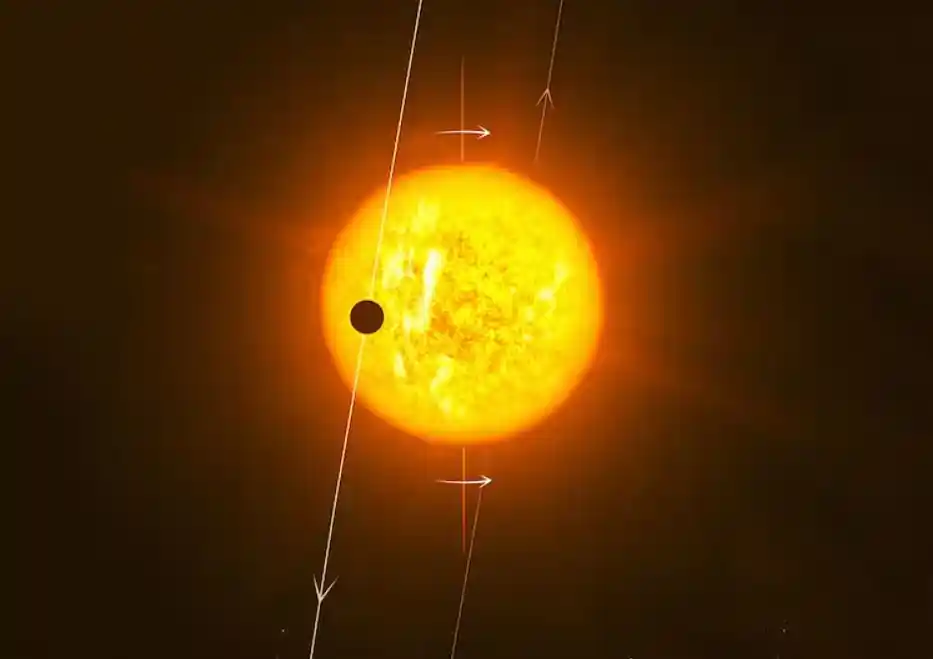Polar Orbit Exoplanets: The Mystery of Their Formation
In 1992, there was a major breakthrough in humanity’s attempts to comprehend the universe. That was when astronomers found the first exoplanets, named Poltergeist and Phobetor, which orbit a pulsar located approximately 2300 light-years away.
Before this discovery, while it was believed that there might be other planets around other stars, it was not confirmed and only existed as a concept in science fiction. However, human history has demonstrated how inaccurate our assumptions about the natural world can be.
Since then, numerous exoplanet discoveries have been made, primarily due to the efforts of NASA’s Kepler and TESS missions. This has confirmed the existence of planets in other solar systems, but the 5000+ exoplanets discovered have shown that our assumptions about them being similar to our own solar system were incorrect.
It is understandable why we assumed that other solar systems would have similar characteristics to our own. For example, it makes logical sense for rocky planets to be located close to the star, and for gas giants and ice giants to be situated further away. Additionally, the clear boundary defined by the main asteroid belt also seems logical. Furthermore, it is reasonable to think that planets would orbit their stars on the ecliptic plane with only slight variations, similar to what we observe in our own solar system.
However, astronomers have found an abundance of gas giants, including hot Jupiters. The first exoplanet discovered around a sun-like star was actually a hot Jupiter that orbited its star in just four days. Much of this can be attributed to the detection bias present in the transit method, which is responsible for the majority of exoplanet discoveries.
Our previous assumptions about the uniformity of solar systems like our own have been challenged by recent exoplanet discoveries. These discoveries include exoplanets with highly eccentric orbits, exoplanets in unexpected locations, such as orbiting white dwarfs, and even planets with strange characteristics, such as molten iron rain.
However, a subcategory of exoplanets that has gained increasing attention from exoplanet scientists are those that are in polar orbits around their stars. Recently, a team of astronomers has discovered another exoplanet in a polar orbit, and this discovery raises questions that require further investigation.
Astronomers use the Rossiter-McLaughlin effect to determine the rotation of a star and if an exoplanet is in a polar orbit. The effect is based on the redshift and blueshift of light. The side of a star that is rotating towards us will produce a blueshift, while the side rotating away will produce a redshift. As an exoplanet transits in front of the star, it causes an effect on the shift of light, which astronomers can measure.
TOI-640 b is a hot Jupiter exoplanet with a mass of about 60% of Jupiter and a radius of approximately 1.7 times that of Jupiter. What makes this planet unique is its high level of stellar obliquity, which is the difference between a star’s spin axis and the orbit of its planets. TOI-640 b has a stellar obliquity of 184 ± 3°, indicating that the planet is in a polar orbit around the star.
It’s noteworthy that there is a significant number of hot Jupiters with misaligned orbits, particularly polar orbits, as opposed to orbits aligned with their star. This cluster of polar orbits cannot be considered a coincidence, and research has shown that this phenomenon is an important clue about the processes responsible for the excitation and evolution of obliquity. A paper published in 2021 titled “A Preponderance of Perpendicular Planets” notes that the “pile-up of polar orbits is a clue about the unknown processes of obliquity excitation and evolution.”
In a 2021 paper, researchers proposed four possible causes for the occurrence of planets in polar orbits. One of the possible causes is Tidal Dissipation (TD), which is thought to generally reduce obliquity, but in some cases it can cause obliquity to remain at 90 degrees, which is caused by the damping of inertial waves in the convective zone due to Coriolis forces. Another possible cause is the Kozai Mechanism, which is the interaction between a star and its planet and a third body called the perturber, which can alter inclination and eccentricity, and even flip the planet into a retrograde or prograde orbit. There is also the Secular Resonance Crossing, which occurs early in a solar system’s history when the disk is still prominent and the resonance between the transiting planet and an outer companion decreases the disk mass, which excites the inclination of the inner planet and pushes it to 90 degrees.
In conclusion, the discovery of exoplanets in polar orbits has led to a renewed interest in the scientific community. While some mechanisms have been proposed to explain the pile-up of polar orbits, none of them can fully explain the observations. More research is needed to increase the sample size and expand the parameter space to understand the underlying processes that lead to the formation of planets in polar orbits. The authors suggest that multiple mechanisms might be at play, working in tandem in different types of systems, and more research is needed to decipher their interplay.
